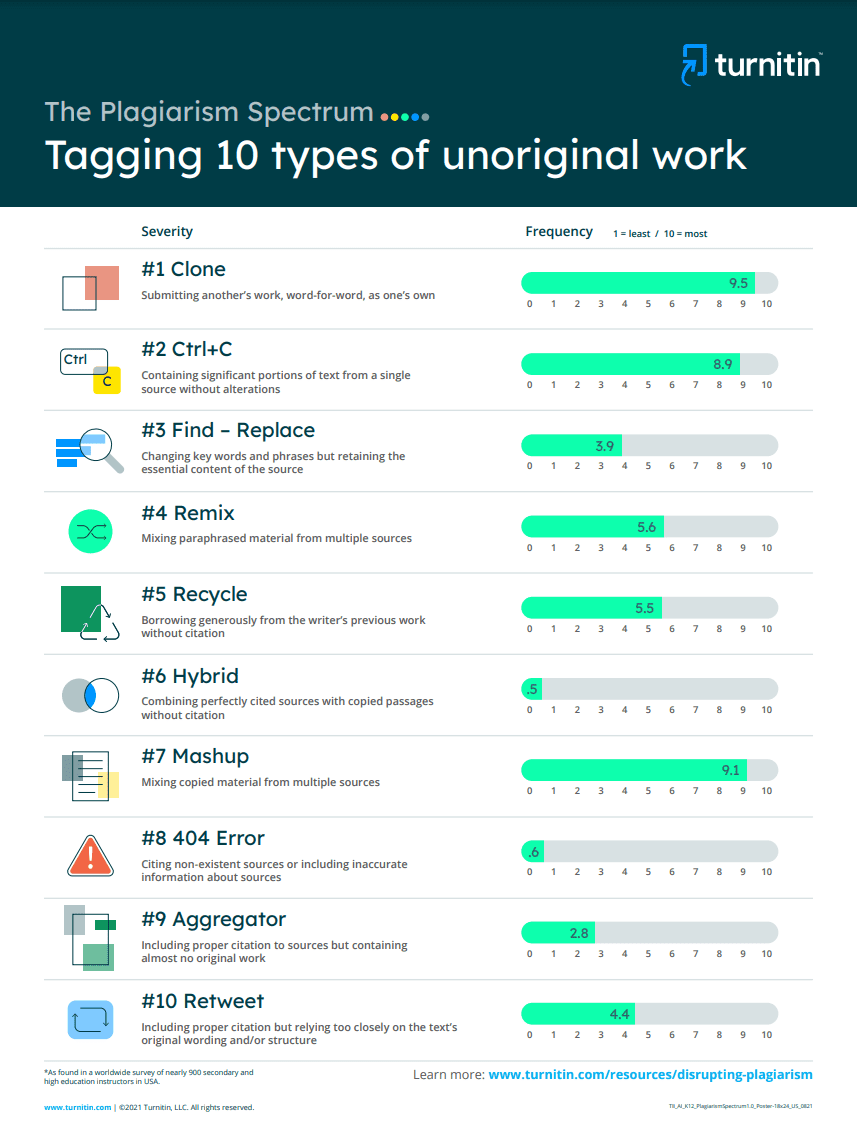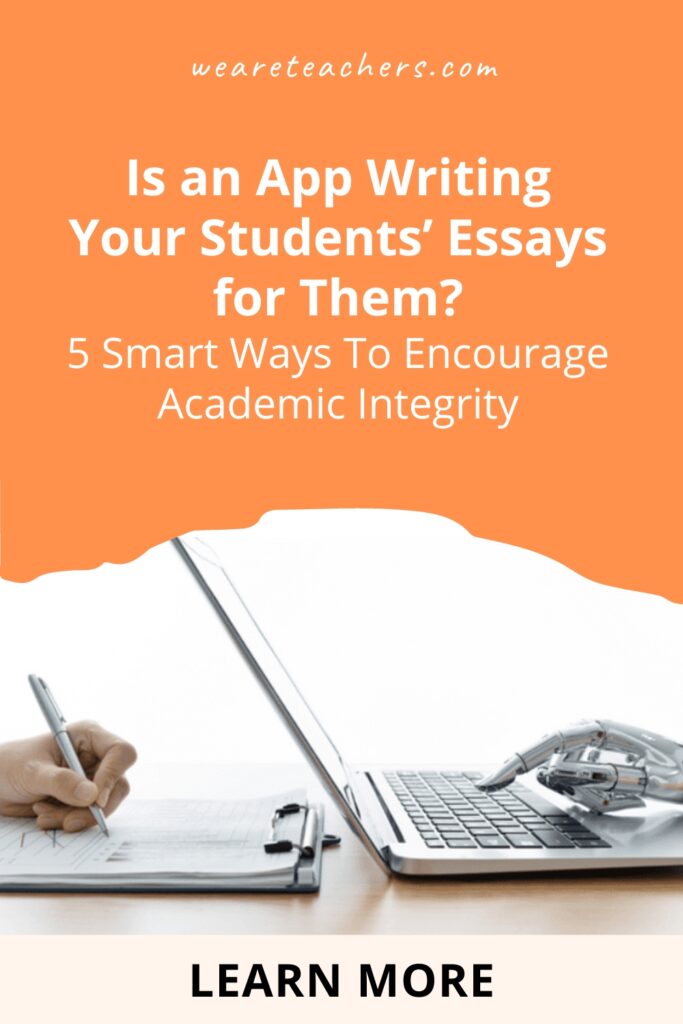When he was in 12th grade, “West” used an AI app to write his biology paper describing the functions of a cell. His teacher gave him a 100% on the assignment, not knowing he hadn’t written a word of it himself. According to a recent story by Chris Stokel-Walker in The Information, West likened the experience to finding a magical machine that does your homework for you. It might sound like a dream for students, but for many teachers, it feels more like a nightmare.
A Brave New World of Plagiarism?
While still relatively new, generative AI is spawning conversation and controversy in many fields. Artists are struggling to determine whether images created by artificial intelligence can produce true works of art or if they are just stealing the data from actual artists’ work to create an image. Writers and musicians grapple with what their work means if an app can create a story or a song that people like just as much. And increasingly, teachers are faced with students who can have artificial intelligence produce an essay worthy of an A. It’s a puzzle that is leaving many people scratching their heads.
Even as we puzzle through these changes, however, it’s important our students understand that academic integrity remains a fundamental and vital part of the learning process. If you present something that you didn’t create as your own work and don’t cite the original author, regardless of whether the author is Shakespeare or silicon chips, it’s academic misconduct.
An Opportunity to Evolve?
As a high school English teacher, I definitely understand the initial desire to throw up my hands in defeat when I read about this sort of thing. If students are determined to cheat and technology just keeps making it easier for them to do it, what chance do we have at getting them to create authentic written work?
At the same time, we realize that teachers have been evolving their teaching methods alongside technology forever. Declines in academic integrity and rigor have been blamed on everything from slide rules to cell phones. But with each new invention, teachers have created innovative ways to incorporate those tools into the learning process.
While recognizing the challenges generative AI might bring to the classroom, imagine using this technology to kickstart brainstorming or to generate writing samples for critique or to assist students learning English as an additional language. These developments also provide opportunities to discuss academic integrity, plagiarism, and other forms of academic misconduct, and why these issues are relevant in today’s world. So, let’s take a look at five ways we can start to shift the way we and our students talk and think about writing to learn.
1. Start with clearer definitions
While we may think our students should have a firm grasp on what does and doesn’t constitute cheating, research indicates that might not be true. Just as technology is making it easier for students to cheat, it also makes it easier for them to make honest mistakes while trying to create their own work. Having discussions about what plagiarism looks like is critical. Here’s one great tool to get a class conversation started:

This infographic from Turnitin shows 10 common forms of plagiarism. The spectrum is a great way to help students see that plagiarism can occur unintentionally or deliberately, but that even unintentional plagiarism is still a problem. By having these conversations with your class, you create a culture of academic integrity and begin to provide students with the important answers to why it matters to produce their own work.
2. Show them the real-world consequences
When polled, many students know that plagiarism is wrong. However, it gets a bit less black-and-white when they begin to discuss why so many of them do it anyway. If the plagiarism check doesn’t catch them, why should they care? Because of this, part of these ongoing discussions about academic integrity might need to include the consequences of what happens when people do take credit for other peoples’ work.
Sadly, finding examples of this is all too easy. From school superintendents losing their jobs after plagiarizing commencement speeches to songwriting credit being given to 11 different people in an attempt to avoid lawsuits, getting caught using someone else’s words cost people their jobs and their reputations. Once our students see that this sort of thing really does matter, they’ll be more willing to try to do things differently.
3. Let them teach you why they plagiarize
According to a study of high school students conducted by the Josephson Institute Center for Youth Ethics, “one out of three high school students admitted that they used the Internet to plagiarize an assignment.” It gets worse. Ninety-five percent of the same students in the 2012 study admitted to some form of cheating during their past school year. Obviously, there is either an academic integrity problem or a skills gap problem when it comes to students properly citing sources. Regardless of which one it is, however, we need to do more than simply using plagiarism checkers to “catch” cheaters. Instead, it needs to become one of the tools we use to help students learn how to properly cite their sources as they learn to think originally.
In order to really make a dent in the plagiarism problem, we’re going to have to give our students a seat at the table and listen to what they have to say. Are they cheating/plagiarizing because they don’t care about the assignments? Or are the stakes are so high they have no other choice but to cheat? Is the problem that it’s just too easy to plagiarize? Students want their voices heard, and by listening to what they tell us are the reasons why plagiarism is such an attractive choice, we’ll be closer to figuring out how we can help them feel more invested in putting their own words on the page.
4. Make your assignments plagiarism-proof
We tell our students not to plagiarize constantly. But how often do we look at assignments to see how easy they are to complete without original thought? Once a teacher finds an essay topic they like, it’s easy to stick with it for years. With that in mind, can we really pretend to be shocked when our students are able to find entire papers written about the theme of a commonly read novel or the importance of a historical event?
Stopping much of the plagiarism we encounter might be as simple as changing how our students demonstrate their understanding. Can we ask questions that can only be answered by our students personally and still get to the core understandings of the unit? If we love an old essay question, can we ask students to find an answer to it online and then provide reasons why they agree or disagree with the assertions? By flipping the model and adding elements that cannot be found in others’ work, we could begin to disrupt the most common reasons why students plagiarize to begin with.
So let’s say our students are willing to try something different. What tools are out there to help teachers and students accomplish these goals?
5. Give students the right tools during the writing process
Once your students have a clear understanding of what plagiarism looks like and why academic integrity matters, the writing process can really take center stage. When students know why they should want to produce their own work and credit those whose ideas are inspiring them, the focus can move to how to do those things effectively. Fortunately, there are some excellent tools out there to help you and your students do just that.
Disrupting Plagiarism

By the time they’re in middle or high school, students ought to know the basic definition of plagiarism. They know we don’t want them to do it. But what they don’t always have quite so strong a grasp on is what exactly constitutes plagiarism. And, more importantly, why they should care. Turnitin’s free Disrupting Plagiarism Planning Resources provides support for teachers facing these issues every day. Their resources provide educators with step-by-step guides on how to begin a conversation with your student about academic integrity. The benefit? The start of developing a culture of academic honesty in your classroom and beyond.
The Disrupting Plagiarism pack of resources also provides tools for those initial lessons about plagiarism. An in-depth teacher’s guide, slide deck, guided notes, and classroom poster are just some of the excellent resources Turnitin offers. By turning the conversation away from “catching” the students who plagiarize and toward an understanding of academic integrity, we’ll have taken a giant step toward helping our students grow as independent writers and thinkers.
Turnitin Draft Coach™
We know that feedback is most useful when it is immediate and focused. Because of this, many of us spend our time while our students write in constant motion. We move from desk to desk, trying to work with each student individually. It works, but there’s only one of us and so many of them. Here is where Turnitin Draft Coach™ can really change the game.
Draft Coach™ works within Google Docs and helps students not at the end of the writing process, but throughout. It identifies potential errors in grammar, problems with similarity to other sources, or citation issues. What truly sets Draft Coach™ apart, however, is that it doesn’t rely on the “click to fix” model. Instead, Draft Coach™ begins by identifying potential problems and helping students understand them. Next, it provides guidance as they revise their work. Real-time formative assessment right there in their document. This helps them become better writers while they write, not just after the assignment’s been submitted.
Generative AI, an area where Turnitin is actively investing in solutions, is only the latest technological tool teachers will be faced with while teaching our students to produce original work that demonstrates their learning. While it may initially frustrate us, the opportunity it provides is huge. To learn from it and teach young people why thinking for themselves is so important will always be some of the most important work we can do as educators.
Learn more about Disrupting Plagiarism and Turnitin Draft Coach™.




